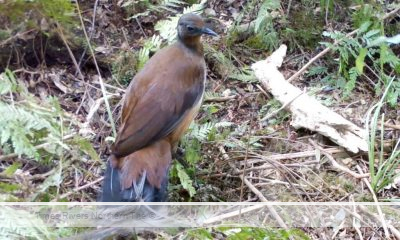INVESTING TODAY TO PROTECT AND GROW AGRICULTURE INTO THE FUTURE
The Albanese Government is delivering on its commitment to back the bush, making critical investments in biosecurity and the timber industry to protect and grow Australia’s vital agricultural and forestry communities.
“The Government’s focus is investing to protect and grow our vibrant agriculture sector now and into the future and our biosecurity system is a pivotal part of this,” Minister for Agriculture, Fisheries and Forestry Murray Watt said.
“The arrival of new pests and diseases into Australia can have devastating and long‑lasting impacts on producers, regional communities and agricultural exports.
“This year we have seen both foot and mouth disease (FMD) and lumpy skin disease (LSD) emerge in Indonesia, putting Australia on heightened alert.
“Australia remains FMD and LSD-free, thanks to the strongest biosecurity response ever implemented, but we must remain vigilant.
“We are injecting $134.1m into the biosecurity system to ensure this continues to be the case.
“This is the first step towards delivering our election commitment of a sustainable biosecurity funding model that allows the system to respond to increasing threats.
“Building on our earlier investments to support Indonesia in tackling these diseases and boost our own frontline efforts, we are fast-tracking $61.6m over the next two years toward this effort.
“Originally budgeted over four years, this funding will greatly assist our overall efforts to fill the gaps in our biosecurity system while strengthening our defences in Northern Australia.”
Traceability
“The Government is also doubling funding for traceability initiatives which would greatly assist in protecting our livestock industry in the event of such an outbreak,” Minister Watt said.
“Increasingly, consumers want to know the products they’re buying are authentic, clean, green and sustainable.
“We are working with industry and states and territory Agriculture Ministers on a national approach to improve agricultural traceability, with a commitment to implement a new scheme by January 1, 2025.
“This includes a significant contribution of $46.7m towards Australia’s livestock traceability ‘contact tracing’ system to maintain our world class system and ensure fast recovery from any potential disease outbreaks and protect Australia’s export trade.
“This is more than double what the previous Morrison Government had budgeted for this program.
“Improved traceability provides transparency in the supply chain and reassurance for consumers – and enhances our biosecurity as well.
“Delivering on our election commitment, we have also committed $11.7m through the budget for an additional 20 detector dogs and handlers to be deployed in airports and mail centres around the country.
“Detector dogs and their handlers are a vital part of our biosecurity system, playing a key role at our border in preventing the entry of diseases such as FMD,” said Minister Watt.
A Sustainable Forestry Sector
Australia’s timber industry plays an important role in regional Australia.
“It employs thousands of workers, while providing critical timber supply,” said Minister Watt.
“That’s why we are delivering on our election commitment and providing $100m for an Australia‑wide institute to deliver forestry research and development; $8.6m to extend the life of the 11 regional forestry hubs until 2027; and $10m for forestry workforce training needs.
“Together these measures will strengthen the forest industry’s capacity to make greater use of the available timber resource and drive innovation and growth,’ said Minister Watt.
Investing in the future
“The agricultural sector has had two bumper years, and it is important to look to the future and be ready for the challenges that lie ahead,” Minister Watt said.
“That’s why we have dedicated $20.8m for the government to be prepared for the next drought and to increase adoption of established drought resilience research, so we are ready to support farmers and communities when they need it most.
“And I am pleased to announce $302 million has been committed through the Natural Heritage Trust to support sustainable agriculture practices and assist land managers to engage in carbon and biodiversity markets.
“We are also providing $4m for an inspector-general for animal welfare, and $12.3m to support regional trade events, like Beef Australia 2024 in Rockhampton.
“The Albanese Government will also deliver on its commitment to introduce mandatory country of origin labelling, greatly assisting consumers find fresh, local seafood, supporting our world-class fisheries industry”
Key agricultural budget initiatives:
- $61.6 million fast tracked to bolster Australia’s biosecurity system
- $11.7 million for more detector dogs
- $46.7 million increased funding for traceability initiatives
- $204.8 million for the forestry sector
- $20.8 million to prepare for the next drought
- $4 million to establish a new Inspector-General for animal welfare
- $12.3 million to support regional trade events
- $8.1 million to develop Australia’s seaweed farming
- $302 million to invest in sustainable agriculture through the Natural Heritage Trust





 Tweed Shire News2 years ago
Tweed Shire News2 years ago
 Motoring News2 years ago
Motoring News2 years ago
 COVID-19 Northern Rivers News3 years ago
COVID-19 Northern Rivers News3 years ago
 COVID-19 Northern Rivers News3 years ago
COVID-19 Northern Rivers News3 years ago
 Northern Rivers Local News3 years ago
Northern Rivers Local News3 years ago
 Health News3 years ago
Health News3 years ago
 COVID-19 Northern Rivers News3 years ago
COVID-19 Northern Rivers News3 years ago
 NSW Breaking News3 years ago
NSW Breaking News3 years ago



























